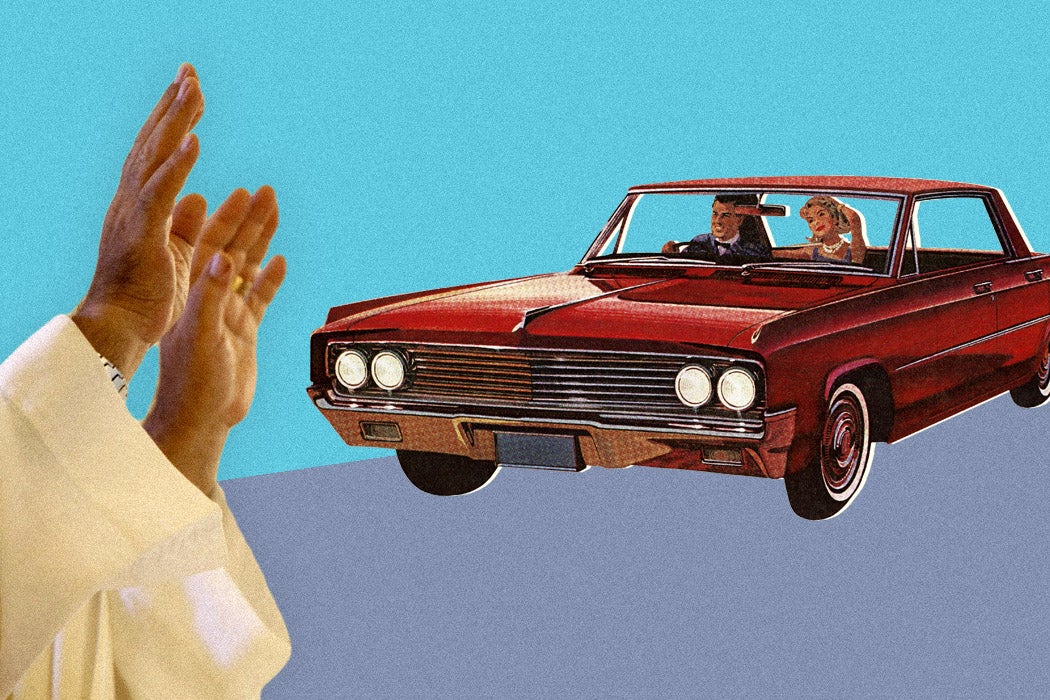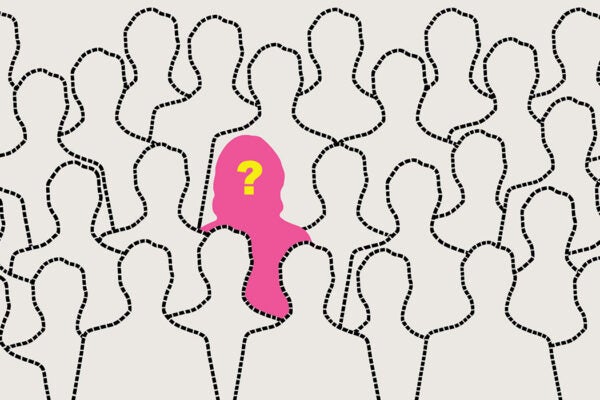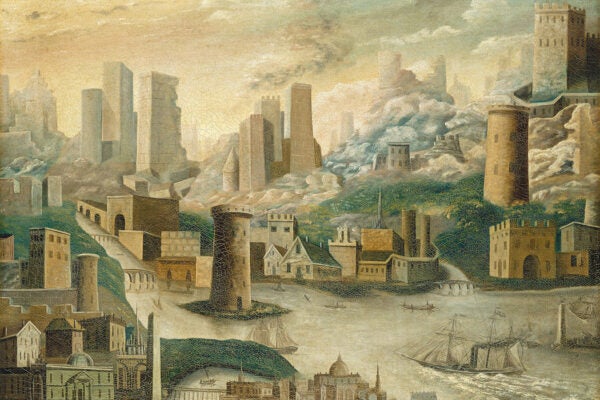The Catholic Church has endured and embraced many technological innovations over the centuries, from the printing press to the internet. As American Studies scholar Peter S. Cajka explains, one technology that changed Catholic life in America—and, specifically, in Milwaukee, Wisconsin—was the automobile.
Cajka writes that, as they became relatively common in the 1920s, cars rapidly developed into a symbol of authority for church officials. Visiting archbishops arrived in motorcades, with thousands of Catholics lining the streets to greet them. During the gas rationing of World War II, priests, like physicians, had special permission to fuel their cars so they could go about their daily rounds.
And churches also incorporated the American love of cars into their spiritual work. By the 1950s, priests frequently conducted blessings of automobiles, sometimes praying over thousands of cars individually, at a single event lasting into the night.
But, Cajka writes, the most significant change was in the way the structure and organization of Catholic communities were affected. In the late nineteenth and early twentieth centuries, a person’s parish often defined their social lives, with schools, gymnasiums, and social halls all drawing together a particular neighborhood group. Often, these groups were composed of immigrants with a common language and ethnic identity.
With the rise of cars, and especially after 1945, these boundaries loosened. Many Catholics moved out of city neighborhoods and into the suburbs. Highway construction led to the demolition of some city churches and the creation of new parishes. And people could drive from one part of the metropolitan area to go to church in another.
That meant that individual churches had to give Catholics a reason to attend mass in the neighborhood rather than somewhere else. For example, Cajka notes, the Church of the Gesu in downtown Milwaukee was built in 1894 to serve Irish Catholics. But by the 1940s, attendance was down and local Catholic authorities noted that “the better” parishioners had left, leaving the church largely serving the poor. In response, Gesu reached out to Catholic converts across the city. Thanks partly to its location just off an interstate highway, many of people from other districts began attending services at Gesu. To improve worshippers’ experience, the church upgraded its physical structure, improved lighting, and installed air conditioning in the 1950s. Gesu pastor Father Cahill described the church as a “spiritual oasis in the heart of the metropolis.”
Weekly Newsletter
Meanwhile, Old St. Mary’s, built in 1943 to serve German immigrants, retooled as a refuge for city office workers, who could visit the building to make the Stations of the Cross on their lunch breaks and drive into the city to attend mass with their families on Sunday. The church erected an eight-foot-high white marble statue of the Virgin Mary to draw the attention of pedestrians walking to and from the downtown center.
“With the widespread diffusion of automobiles, the Catholic community was no longer simply an outgrowth of neighborhood or identity,” Cajka concludes. “The congregation was something that had to be built.”







